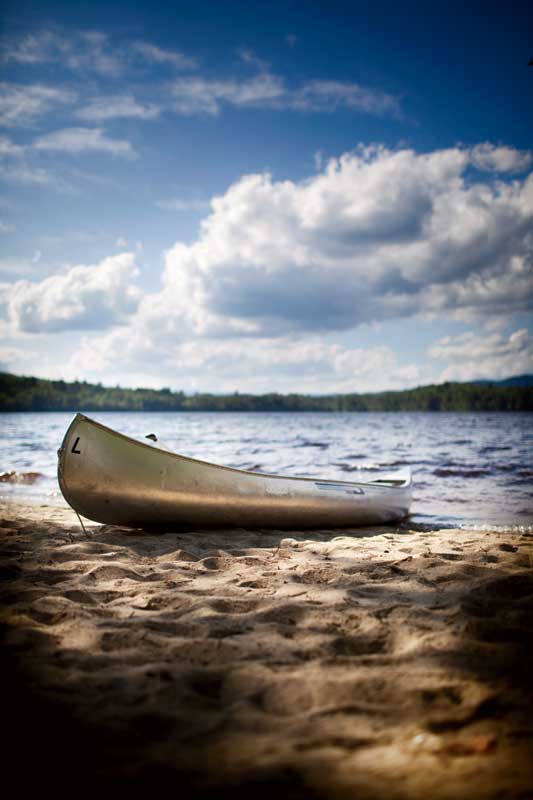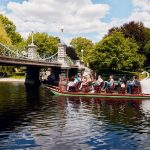Wild Lakes in New England
One afternoon last August, I set off up West Grand Lake in eastern Maine, my kayak loaded with enough food and gear for two nights of island camping. No sooner had I dipped my paddle, though, than four canoes occupied by eight beefy guys pushed off from the shore nearby. Loaded with brightly colored coolers, […]

Coffee By Design | Portland, Maine
Photo Credit : Katherine KeenanOne afternoon last August, I set off up West Grand Lake in eastern Maine, my kayak loaded with enough food and gear for two nights of island camping. No sooner had I dipped my paddle, though, than four canoes occupied by eight beefy guys pushed off from the shore nearby. Loaded with brightly colored coolers, their boats looked a bit like barges hauling uncommonly large Lego blocks. They were excited about their trip and talked with one another in booming, thunderstorm-like voices, punctuated with jagged, raspy laughs. I thought, Uh-oh. So much for my quiet camping trip on the lake.
They paddled up the northeast shore, while I stuck to the southwest. Within 10 minutes I couldn’t hear them. Within 20 minutes I had to squint to make them out against the pines. Within 30 they’d vanished utterly.
How one defines a wild lake is much in the mind of the definer. I’ve got something of a personal algorithm for determining a lake’s wildness, involving the sheer acreage of the water divided by the number of power boats encountered, times the number of loons heard at night, minus the number of lights you can see along the shore two hours after sunset (or something like that). But the number of minutes it takes for a lake to wholly digest eight big, loud guys? I hadn’t thought of that, and as I paddled I gave some thought as to where it might fit into my mental spreadsheets.
New England is studded with thousands of lakes, the souvenirs left behind by retreating glaciers more than a dozen millennia ago. At first, lakes didn’t attract the fervent attention of the European colonists the way the region’s rivers did; the rivers were useful highways, connecting coastal communities with timber, game, and, later, inland settlements. Lakes were more like attractive but useless baubles–at least until the 19th century, when they emerged as valuable resources.
By then, industry had figured out how to make lakes earn their keep. First, the ice men discovered that they could harvest huge blocks midwinter and ship them come summer to distant lands in sawdust-filled clippers. And by midcentury, the new pulp mills and steam engines found the lakes useful as conduits. Lumbermen felled trees along lakeshores in winter and rafted them to river outlets in spring, where they could be floated downstream to mills.
At the same time, a handful of romantics and Transcendentalists found a new lens through which to view the lakes, seeing them in a larger, more spiritual manner. “A lake is the landscape’s most beautiful and expressive feature,” wrote Henry David Thoreau. “It is earth’s eye; looking into which the beholder measures the depth of his own nature.” He wrote this even as the ice men and timber cutters were poaching the Arcadian splendor of his Walden Pond.
And today? Wild lakes are still in the crosshairs of an age-old tussle–although the industry has changed. The icemen are gone, and the timber cutters have been pushed back from the lakeshores by zoning. In their place have come developers of second homes and weekend consumers of wholesale wilderness, each staking a claim to open space.
So do wild lakes still exist, and if so, what do they look like? I undertook a small expedition in search of New England’s wild lakes, trying to refine my algorithm, getting the formula just right.







